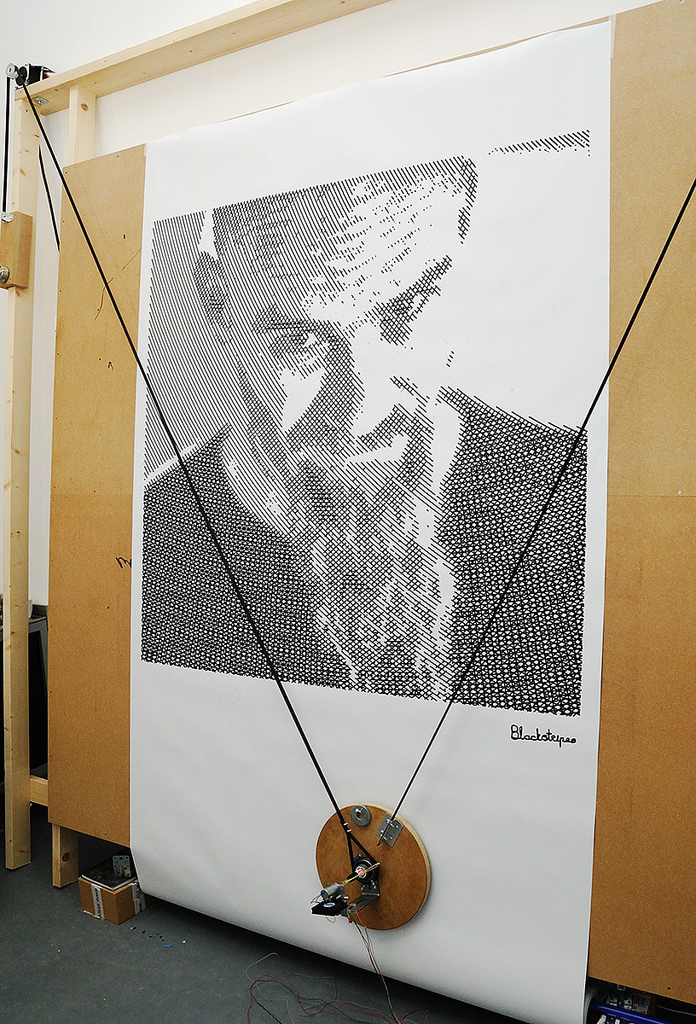Kongorilla let me know about this great new bot, or rather a great new service / business – it’s a Dutch company called Black Stripes, who offer a poster / drawing production service that offers a very handsome web-based input and preview system (go to “shop”) and output the artwork using a very covetable hanging-v plotter machine
Beautiful results and a really nice, industrial-quality setup. Big steppers, big drivers. They seem to be using a Raspberry Pi + arduino combo with discrete CNC style stepper drivers, and toothed belts for suspension. A solenoid raised or lowers the pen.
It’s great to see an actual product based on this process, and some degree of automation going on too, in the image upload process. I like best that the form of the output, the direction of the lines is a succinct expression of the form of the machine – the drawings could only come out of a machine like this, and the angles at the intersections and the and centre points of the arcs are all fingerprints tied to this particular machine too.
They have their counterweights running on little tracks too! That’s a good idea.


